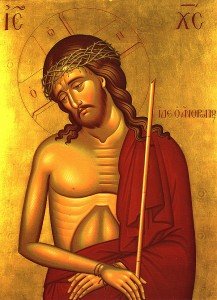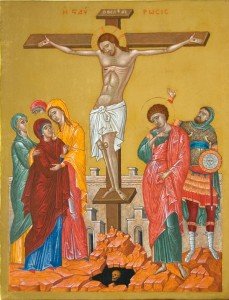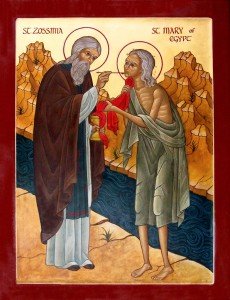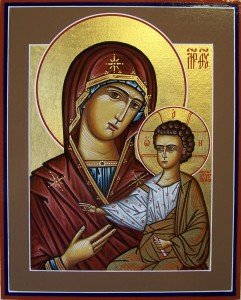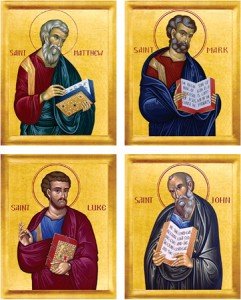EASTER PASTORAL OF THE UKRAINIAN CATHOLIC HIERARCHY OF THE U.S.A. TO OUR CLERGY, HIEROMONKS AND BROTHERS, RELIGIOUS SISTERS, SEMINARIANS AND BELOVED FAITHFUL
Christ is Risen! Indeed He is Risen!
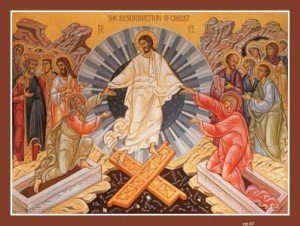 “Jesus said to her, “Mary!” She turned and said to him in Hebrew, “Rabbouni,” which means Teacher. Jesus said to her, “Stop holding on to me, for I have not yet ascended to the Father. But go to my brothers and tell them, ‘I am going to my Father and your Father, to my God and your God.’” Mary of Magdalene went and announced to the disciples, “I have seen the Lord,” and what he told her.” John 20:16-20
“Jesus said to her, “Mary!” She turned and said to him in Hebrew, “Rabbouni,” which means Teacher. Jesus said to her, “Stop holding on to me, for I have not yet ascended to the Father. But go to my brothers and tell them, ‘I am going to my Father and your Father, to my God and your God.’” Mary of Magdalene went and announced to the disciples, “I have seen the Lord,” and what he told her.” John 20:16-20
Today, we share a joy, a joy of wonder, a joy that comes from within, because Christ is Risen! Today, we share the same joy of the disciples to whom Mary Magdalene had brought the Good News that Jesus Christ is risen, and she has seen Him.
This joy of resurrection starts from a personal encounter with risen Christ. What does it take for Mary Magdalene’s tears to give way to Easter joy? Nothing less than meeting the risen Christ. Meeting the risen Savior Himself! Even this is not so straightforward. Jesus appears to her, but Mary doesn’t recognize Him. But then, Jesus calls her name, Mary. She turns, and now when she looks; her world is transformed. Before her is no gardener, but the resurrected Christ, alive and free from death. Around her is no tomb of lifeless rock, but the living Savior who calls her out of darkness and into a marvelous light. After encountering the risen Jesus Mary Magdalene obeys the Lord’s command to tell the news of the resurrection to the disciples.
The same joy is experienced by the disciples on the road to Emmaus. This personal encounter with the risen Lord gives them courage and strength to run back to the disciples and tell them what happened on the way and how they recognized Jesus in the breaking of the bread.
On Easter morning what we celebrate is that Christ has overcome sin and evil and death. There is forgiveness and hope and new life even from the very rock bottom of suffering and despair. And so, the Easter gospel is not only about life from death, but also about this encounter Mary has with the resurrected Christ. Jesus is raised, but then He also meets us. And not merely as a dazzling figure we do not recognize, Jesus meets us – calls our name, opens our eyes, and invites us to see.
At the Resurrection Matins we sing: “Let us rise at early dawn and bring to our Master a hymn instead of myrrh, and we shall see Christ the Sun of righteousness Who enlightens the life of all.” (Resurrection Matins, Ode 5).
The risen Christ wants us to experience the joy of encountering Him and living for Christ and not for self—the joy of being liberated from the sins which trap us in self-centeredness and discover the blessing of Christ’s self-giving love. No matter what may be happening in our lives, we can still experience spiritual joy through the love of God and living the way God made us to live, which is for self-giving love.
The Easter gospel is not just about new life, but new life that comes to us. Not just Christ raised from the dead, but the risen Christ meeting us and calling our names. Easter is an encounter, a call and a summons. Go and tell what you have seen and heard. Christ is alive, and more than that He has sought us out and called us by name. Whatever our doubts and our fears, whatever our failures and betrayals, whatever the wounds we try to protect – today is а new day. We are all to become witnesses of the Resurrection of Jesus. We are called to bring that ‘ray’ of the light of the Resurrection into the various human situations: into those happy ones, rendering them more beautiful, and into those sorrowful situations, bringing serenity and hope.”
In this Year of Mercy, Pope Francis encourages us “to experience the opening of our hearts to those living on the outermost fringes of society” and to “keep alive the desire to know how to welcome the numerous signs of the tenderness which God offers to the whole world and, above all, to those who suffer, who are alone and abandoned, without hope of being pardoned or feeling the Father’s love” (Misericordiae Vultus, Pope Francis).
We know how the poor need help. We know how the sick need healing, how the oppressed need justice, how the grieving need comfort. We know how the spiritual life needs exercise, with daily prayer, meditation, study, and the companionship of kindred, seeking souls. Being people of the resurrection, graced with this knowledge, it is our calling to talk to people on the road and announce the Good News of the risen Christ to them. During this period of contemplating Christ’s mercy, we are reminded that Jesus not only preached mercy, but He put into action works of mercy as He assisted the poor, consoled the lonely and outcast, relieved suffering and affliction and taught the ignorant. No one person can give what they do not have, thus each one of us must know Christ personally. We need to know Him personally so that we can go out and proclaim Him to every person we encounter.
Today is our time of joy and renewed evangelical spirit to proclaim the Good News of the risen Christ to others. Our parish communities should become places to encounter the living Christ! This is what Christ is inviting us to do! This is the day that Lord has made, let us exalt and rejoice in it. This is the calling to each of us, so we may bring this joy of encountering, the risen Christ to others. Will we be able to share this personal encounter with the risen Christ with our families, our friends, and people we encounter in our daily lives? Let us experience this Easter morning joy and let us radiate this joy in our lives. Let the Mercy of Christ shine in our lives and deeds!
Our fervent prayer is that our Resurrected and Living Lord may bestow his peace and grace upon you and your loved ones, upon all our brothers and sisters scattered throughout the world!
Christ is Risen! Indeed He is Risen!
+Stefan Soroka
Archbishop of Philadelphia for Ukrainians
Metropolitan of Ukrainian Catholics in the United States
+Richard Seminack
Eparch of St. Nicholas in Chicago
+Paul Chomnycky, OSBM
Eparch of Stamford
+ Bohdan J. Danylo (author)
Eparch of St. Josaphat in Parma
+John Bura
Auxiliary Bishop of Philadelphia
Easter 2016
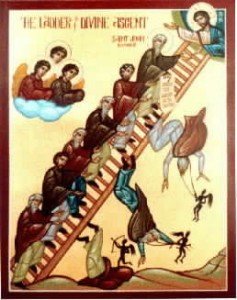 The fifteenth step on John’s Ladder deals with LUST and CHASTITY. St. John defines Chastity as
The fifteenth step on John’s Ladder deals with LUST and CHASTITY. St. John defines Chastity as
